As a horse owner, it would be helpful to have a basic understanding of the various components of a horse’s anatomy so that you will recognize the red flags that may signal illness, pain, or discomfort in your horse.
One of the most critical areas of the horse skeleton is its limbs. To have a horse with inflamed, infected, or otherwise disabled tendons, joints, or hooves is a critical situation that will require immediate medical attention in addition to a slow and closely monitored recovery.
Horse founder is otherwise known as laminitis in the equine community and creates significant welfare concerns for you as the horse owner. This article will discuss the symptoms, causes, diagnosis, treatment, and recovery of this condition.
What Is Horse Founder?
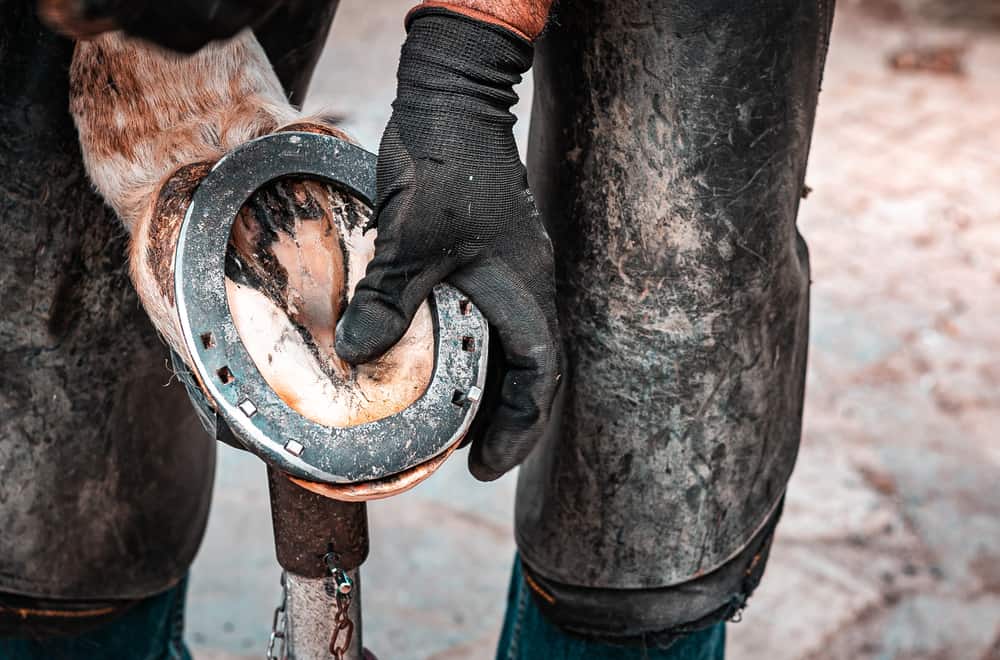
Let us speak a little more about horse anatomy. In the lower foot structure of a horse, there are two fundamental bones: the navicular bone and the coffin bone.
The navicular bone aims to provide cushion and flex to each horse’s step. However, the coffin bone embeds itself into the horse’s hoof. Around it, there is soft tissue, called laminae, that helps attach this bone to the hoof wall.
Horse founder causes this attachment layer to become inflamed or, in critical cases, even disintegrate the surrounding soft tissue. Internally, this creates excess pressure with extreme pain to follow.
Prevention is critical because the horse becomes susceptible to future recurrences once it has been diagnosed with laminitis. Another thing to note is that this debilitating ailment is not curable but only managed with immediate and attentive care.
Signs of Horse Founder
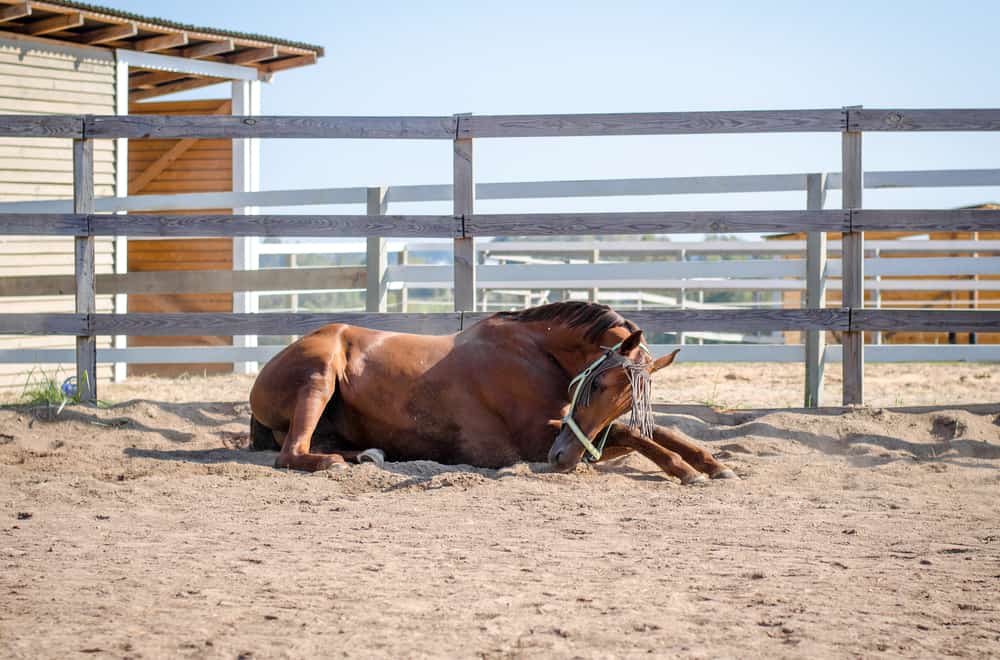
By just looking at the exterior of the hoof, you will be unable to tell whether or not a horse has laminitis (founder). For this reason, it would be helpful if you knew what typical red flags to watch out for this ailment.
According to BlueCross, a British charity organization for animal welfare, a horse, when standing, “may well lean back on to its hind feet in order to relieve the presto front feet.”
In addition, a horse may show some signs of lameness or may not bear down its total weight upon the affected limb. The horse will lay down in more severe cases and even refuse to get up.
In cases of acute horse founder, it is typical for the coffin bone to sink deeper into the hoof capsule. Therefore, a diagnosis of horse founder can be highly crippling to the animal. In the worst cases, the horse can experience hoof sloughing with the possibility of the coffin bone breaking through the hoof wall.
Lauren Alderman, DVM, CVA, CVSMT, writes that a horse encountering an “acute episode of laminitis [ ] may be distressed, sweating, hyperventilating, and have an elevated heart rate.”
Types & Symptoms of Horse Founder
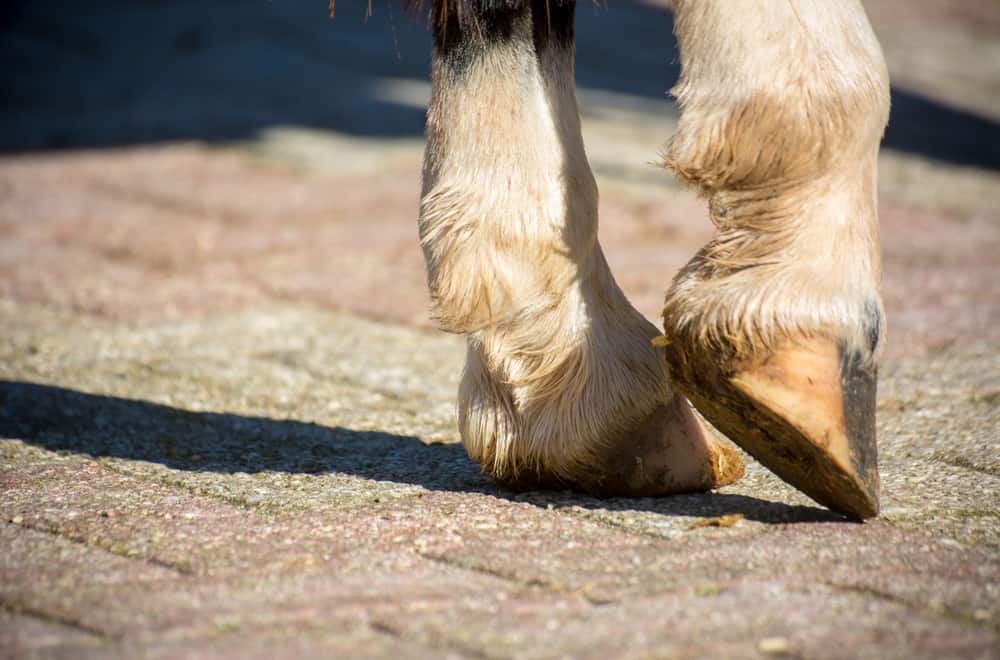
Generally, the two types of horse founder are acute and chronic. Unfortunately, the redisposition of weight from the affected leg to supporting limbs could even cause support-limb founder.
Types
- Acute Founder: Symptoms usually come on suddenly and can be rather severe. In these cases, the coffin bone and laminae are detached from one another very traumatically.
- Chronic Founder: Symptoms of acute founder continue to be present for more than three days. Once a horse endures relapse from a previous case of laminitis, it is chronic.
- Support-Limb Founder: Occurs when healthy limbs undergo stress from supporting the horse’s extra weight.
Symptoms
Although horse founder can occur in any of your horse’s feet, the ailment is most common in the animal’s forelimbs. Some of the most common symptoms include:
- Walking with a heel strike
- Movement of pedal bone (can be noticed by a pair of trained hands)
- Showing favor to one limb or another
- Shows signs of distress and obvious pain when moving
- Has more propensity to lay down
- Refusal to stand up
- Will not lift the affected limb
- Sudden lameness
- The hoof wall can feel warm to the touch
Causes of Horse Founder
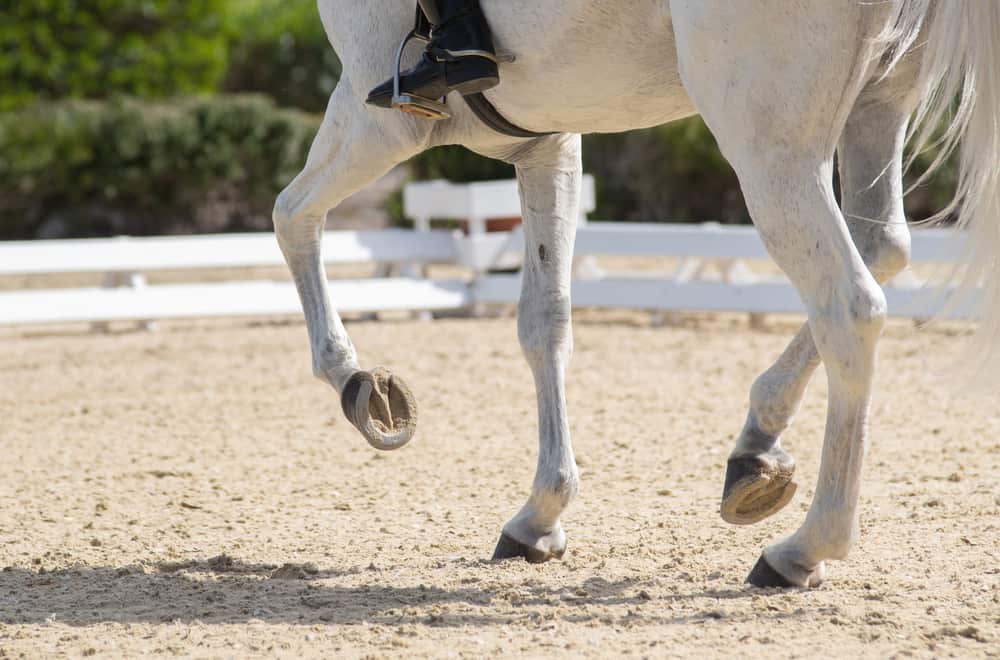
Believe it or not, one of the leading causes of laminitis in horses is being overweight. Think about it: generally, a horse can weigh anywhere between 900 and 2,000 pounds, depending on its breed and purpose.
You don’t have to be a doctor to understand the delicate nature of a horse’s limbs. Compared to the size and weight of the horse’s barrel and head, its legs are relatively quite small.
The primary function of a horse’s limbs is to hold up its body and act as buffers during movement. So while the front and back limbs operate differently, the aim is the same.
As a horse owner, you should pay careful attention to the state of your horse’s limbs. Unfortunately, it is the case that horses suffer this painful ailment at the hand of their owner’s negligence.
Often, horses are overworked and required to pull loads that far reach their capability. In other cases, improper diet and nutrition can be the culprit of an irreversible and agonizing ordeal.
Other Leading Causes of Horse Founder
- Being worked too hard or for too extended an amount of time
- Severe bacterial infections
- Extreme fevers or other illnesses
- Over-feeding grain (especially in barn environments)
- Lameness in one leg causes the ailment in the supporting limb
- Inexperienced hoof trimming
- Stressful situations such as traveling and changing environments
- Pregnancy and foaling
- Hormonal diseases such as Cushing’s disease or Equine Metabolic Syndrome
- Other inflammation-type disorders can also cause laminitis to flare up.
Diagnosis of Horse Founder
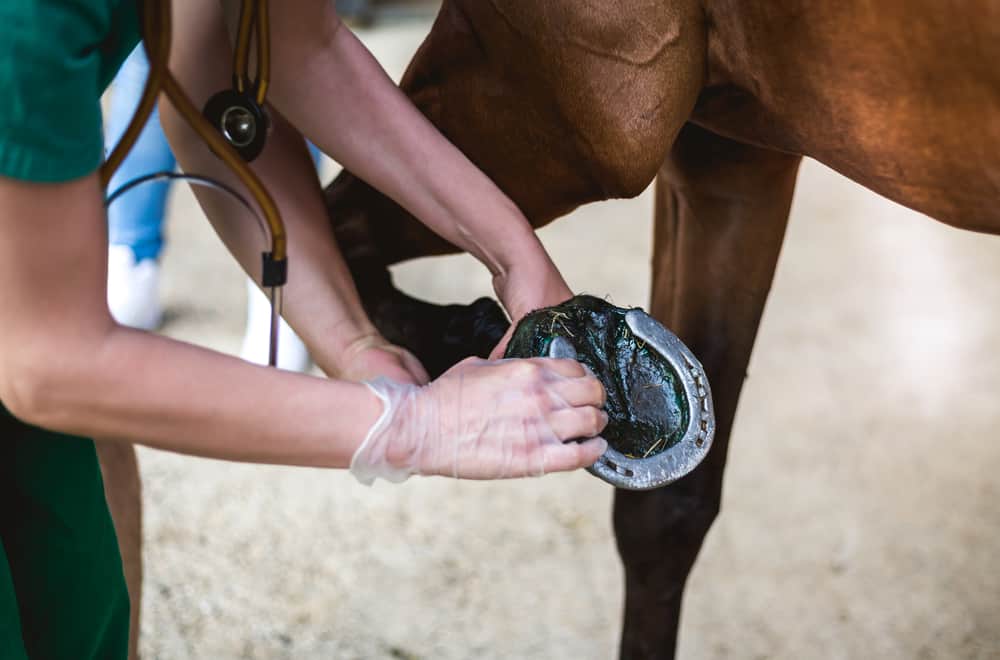
As a horse owner, you probably already have a trusted and reliable equine veterinarian that you rely on for your horse’s medical attention. However, if you have noticed any sign already discussed, do not hesitate to pick up the phone immediately.
Whether you have to arrange transportation for your horse’s medical visit or your veterinarian has agreed to come to your property, you should have all of your horse’s medical history on file in a handy location.
The veterinarian will quickly inform themselves (new veterinarian) or remind themselves of your horse’s vaccination and medical history as they begin to prepare to take its vitals.
In the equine veterinary field, vitals are a significant portion of the examination and will naturally be comprehensive. In addition, the horse’s body temperature, height, weight, overall body condition, behavior, apparent pain or discomfort levels, and heart rates are key indicators that the veterinarian will reference later in further testing.
After a complete and thorough physical, the real work to properly assess and diagnose a possible threat of laminitis begins. So your veterinarian will very likely need to take some X-rays to determine if any movement of the coffin bone has occurred.
If the laminitis is severe enough, an experienced veterinarian will know almost immediately and may do away with typical testing techniques such as a lameness examination.
To test a horse’s lameness, a veterinarian will assess its conformation and posture in the standing position. They may also attempt to move the horse’s limb, checking for its range of motion.
Suppose your horse can still stand and move around, although it exhibits discomfort. In that case, the veterinarian could also inject the affected limb with a numbing medication and observe the horse trotting around. Then, depending on how the horse carries itself, a trained eye can tell if it has laminitis.
Veterinarians and equine farriers alike understand the delicate nature of feet all too well. Therefore, your veterinarian may also use a hoof tester, “a device that can be used to apply gentle pressure to any spot on the horse’s sole, toe, or heel area.”
Beyond these measures, your veterinarian may also require full panel diagnostic tests to check blood count, insulin levels, bacterial levels, and more.
Treatment of Horse Founder
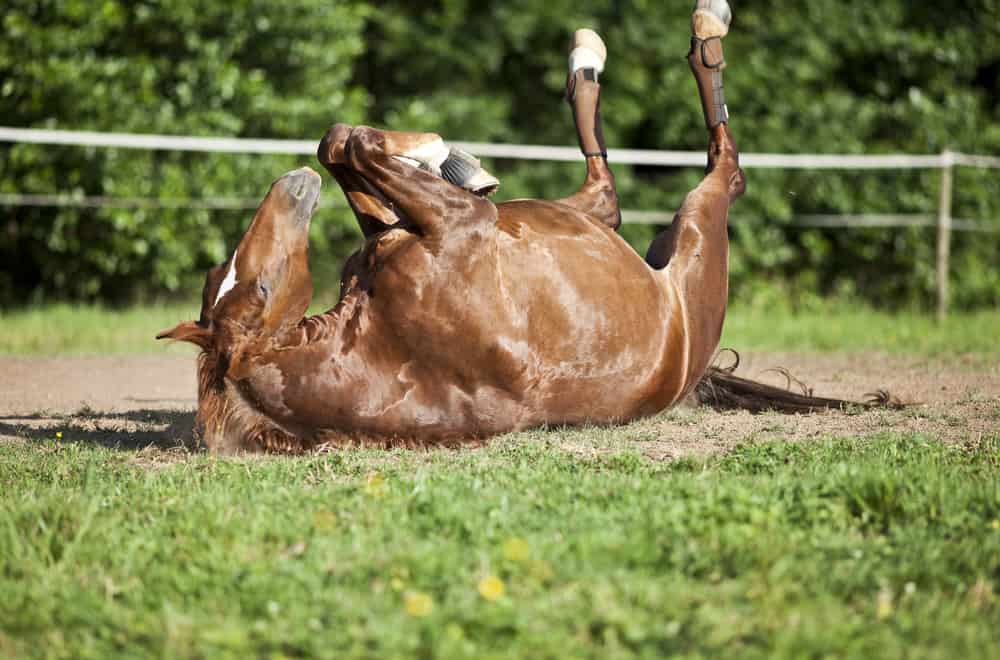
Although laminitis is not curable, it can be treated and managed with due diligence. Unfortunately, this ailment is not to be taken lightly either as the horse owner or a veterinarian in the field.
In the US National Library of Medicine, one study precisely followed the unfavorable outcomes of horses diagnosed with horse founder. The findings were quite alarming, indicating that 247 euthanized horses and another 13 dead (due to a combination of other diseases) resulted from a source population of 591 horses diagnosed with laminitis.
That said, successful horse founder treatment must begin with a clear understanding of what caused it to start with. For starters, though, your horse is in a lot of pain, so your veterinarian will prescribe a medication for pain management.
The horse’s response to the anti-inflammatory medication is critical. Therefore, you will want to provide your vet with updates, and they will make any appropriate changes to the drug and dosage depending on the stage and intensity of the laminitis.
It would help if you moved your affected horse to a smaller living area but be sure not to put it in isolation. If your horse does not have visual stimulation and contact with other horses, socially-induced stress could make matters worse.
Your horse’s new living area should have deep shavings that will conform to the shape of its hoof when it digs in. In addition to this, ask your veterinarian about the potential use of horse putty, which provides frog support and helps prevent bacterial and fungal infections.
Cold therapy is often used and requires that the horse’s foot remains under forty degrees Fahrenheit for a period recommended by your veterinarian. The icy-bucket challenge is also an excellent measure to take upon first noticing any signs of laminitis before your veterinarian arrives.
Rest is crucial to any recovery; however, be sure not to encourage lameness by letting your horse lie down. Instead, ask your veterinarian how you can best support your horse’s physical and joint health throughout its recovery process.
A modified surgical treatment may be necessary in severe cases, entailing a completely different set of post-surgery rehabilitation and recovery instructions.
Recovery From Horse Founder

As your horse recovers from laminitis, you should have a new appreciation for how critical hoof care and dietary management is. You will want to connect your farrier with your veterinarian so that they can agree on the best method for trimming and shoeing your horse’s hooves.
And just like weight management for humans, you cannot go on a diet, lose a bunch of weight, and then return to eating the same unhealthy way as you did before the diet.
It would help if you continually manage your horse’s diet, making adjustments when necessary. Remember, aim to feed your horse per its breed and purpose.
In general, a horse should consume about 2% of its body weight in food. And it would be best if you gave a dieting horse proportionally less. Also, feeding little and often is the best practice as it most closely resembles a horse’s natural foraging pattern.
Pay careful attention to seasonal and climatic changes which affect the richness of various forage. One tip is to “restrict access to lush pasture, particularly during the wet spring months.”
Also, if your horse is foaling, be aware that the mare does not have a retained placenta- if so, contact your veterinarian immediately, as this could bring on laminitis.
While laminitis is very unpredictable and can strike any member of the Equus Caballos species at any time, be careful to follow preventive measures and take heed to your veterinarian’s advice and recommendations to take an active role in your horse’s health and wellness.
Final Founder Thoughts
Laminitis can result from non-nutritional factors such as a traumatic injury or result from another persistent disease; however, in most cases, obesity and a poorly-managed pasture and eating regimen are to blame.
Your horse’s foot health and life depend on how you manage its lifestyle. Be sure to discuss the suitability of your particular horse breed to the purpose you had intended for it.
Also, stay abreast of various feeding and supplement options so that you can be sure to implement regular changes to your horse’s diet depending on seasonal changes, pasture deficiencies, in addition to your horse’s age, weight, and workload.
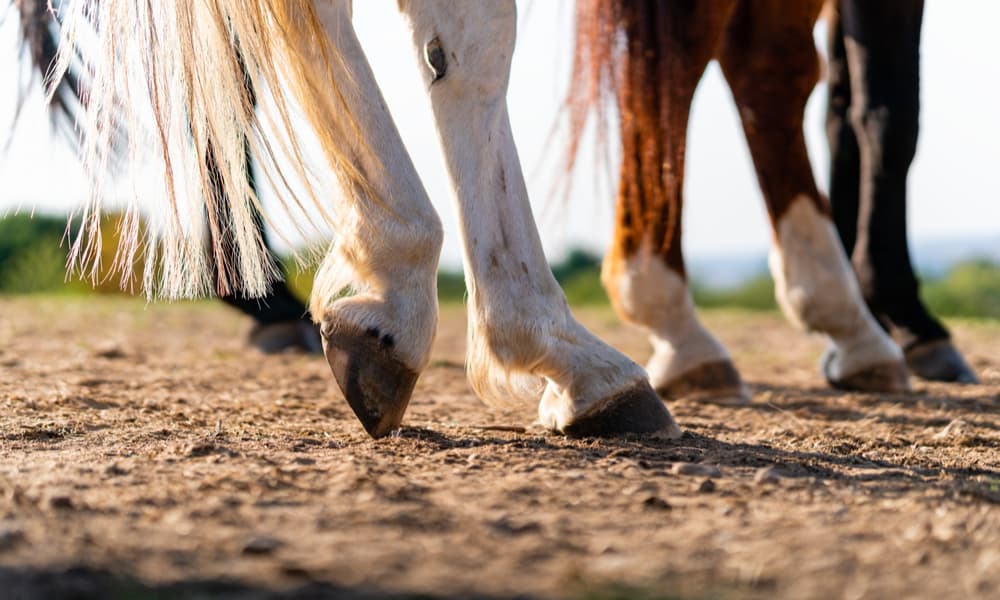








Thanks for this article. It’s so amazing